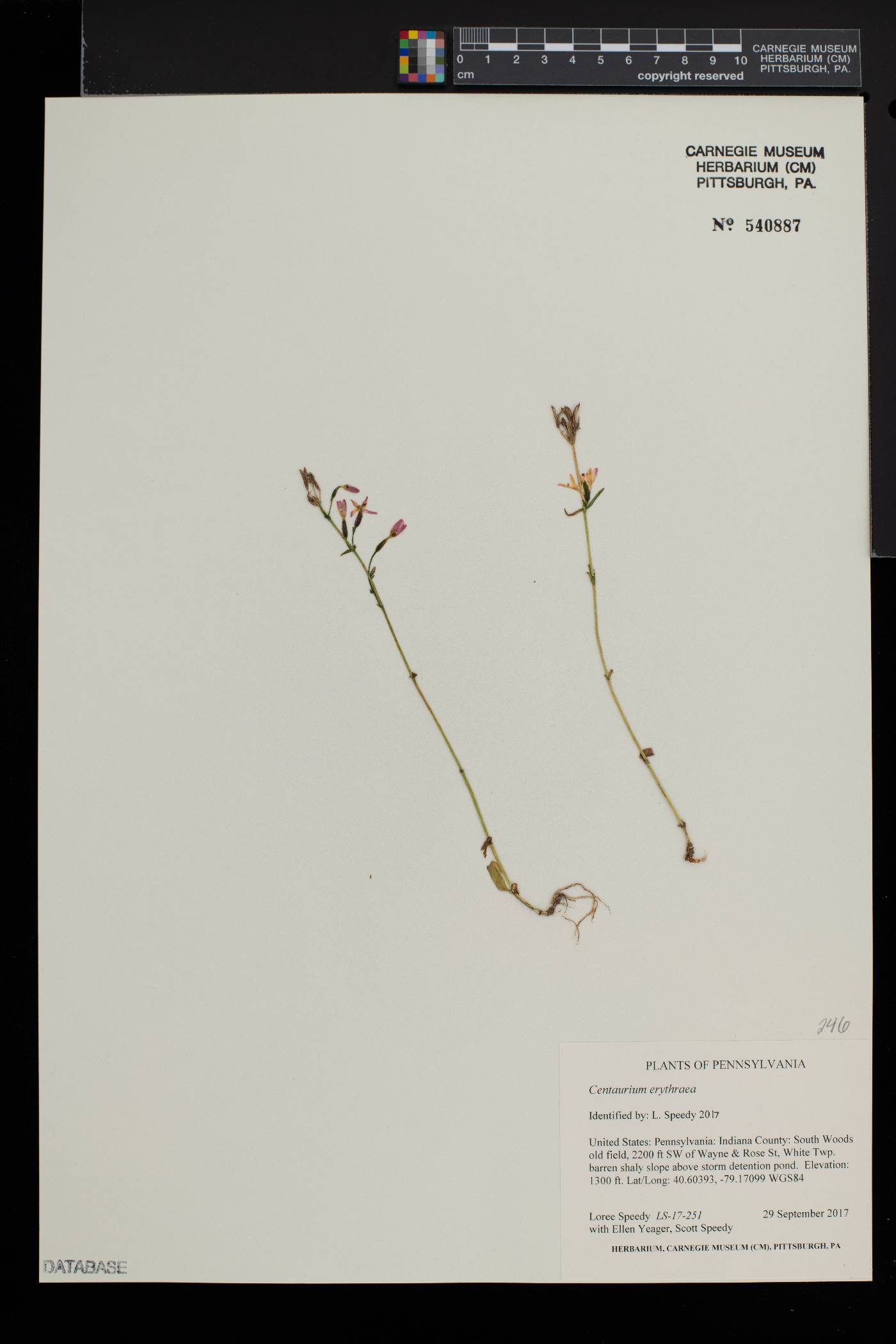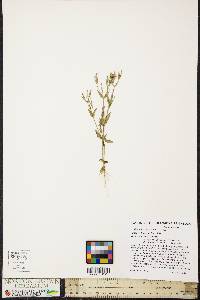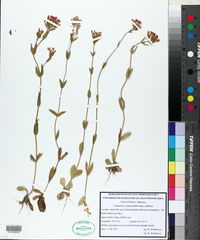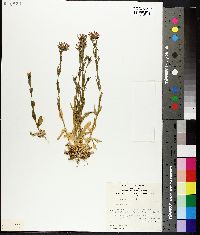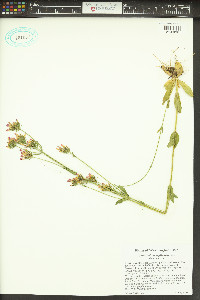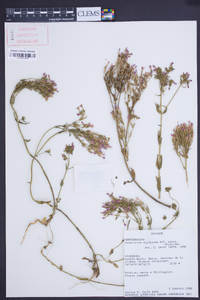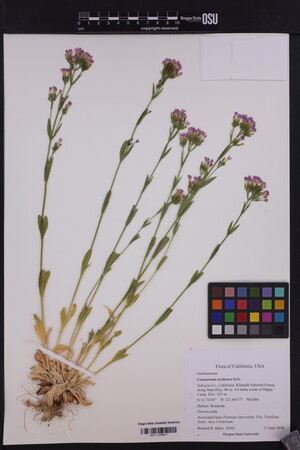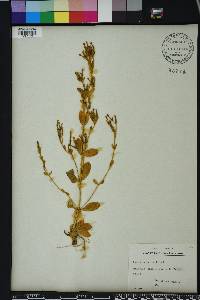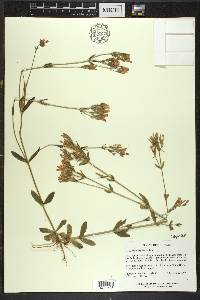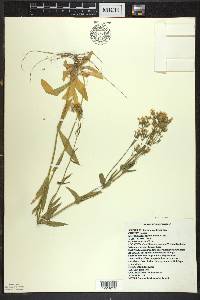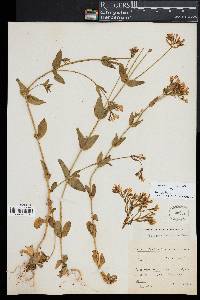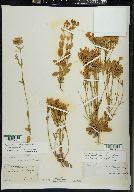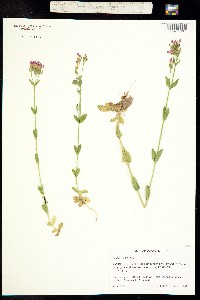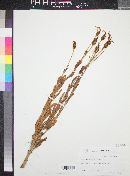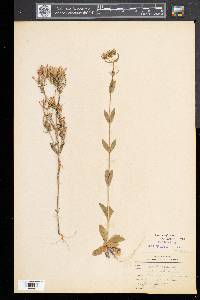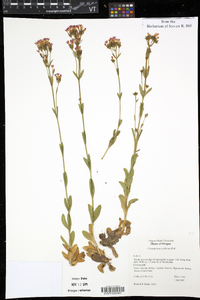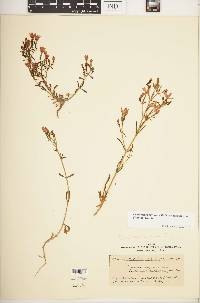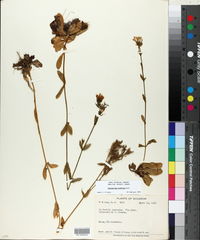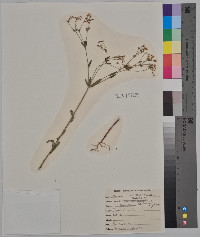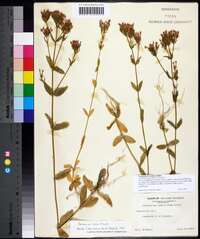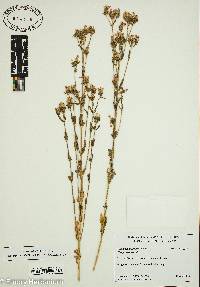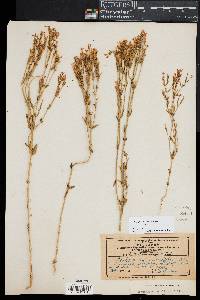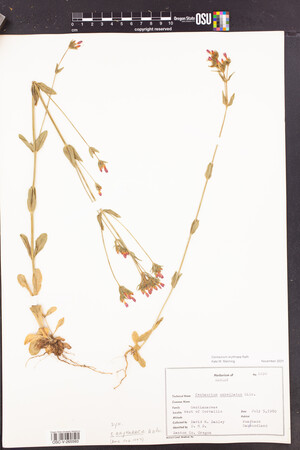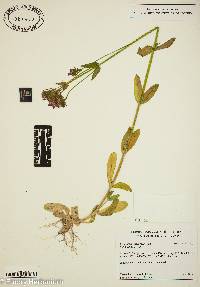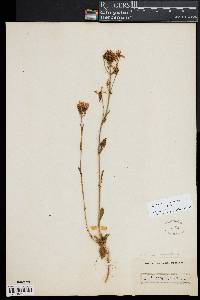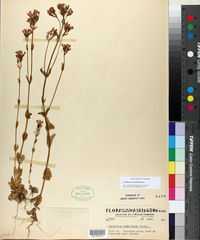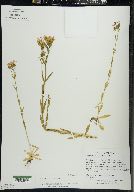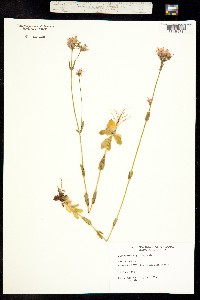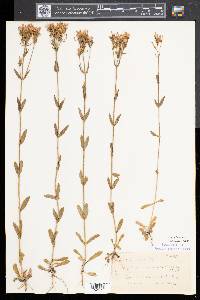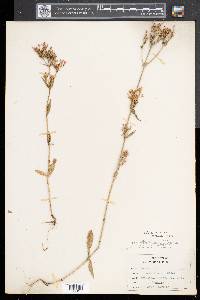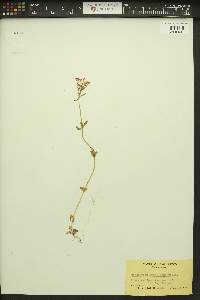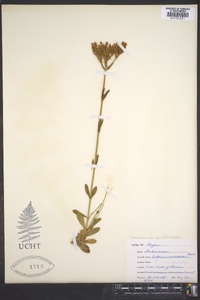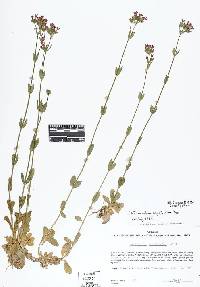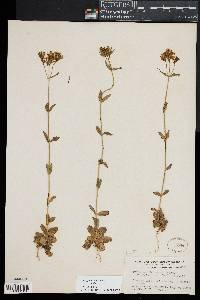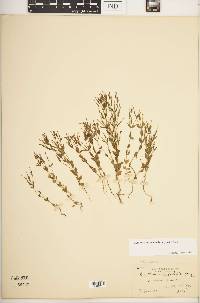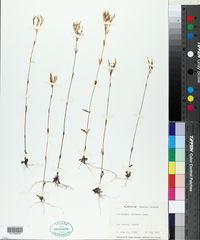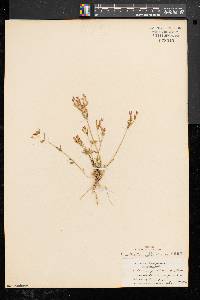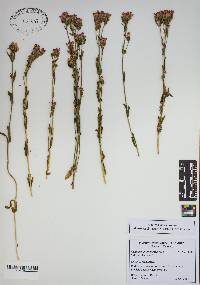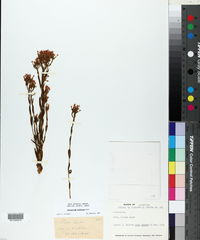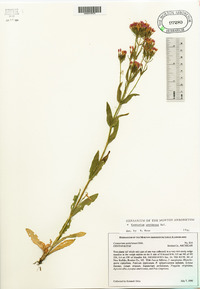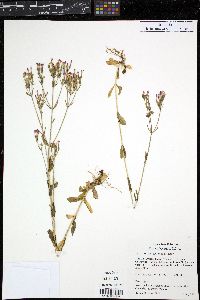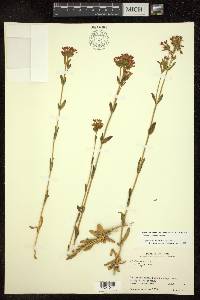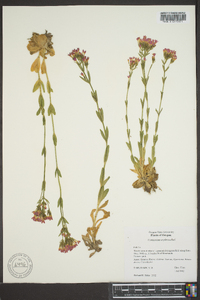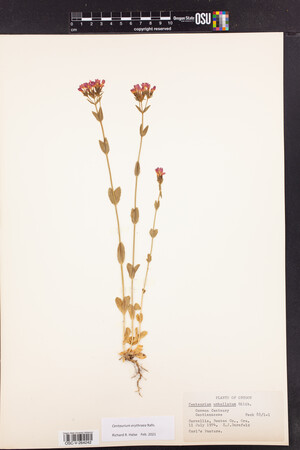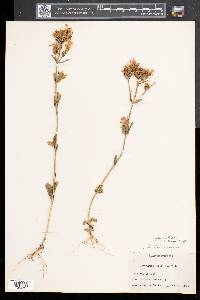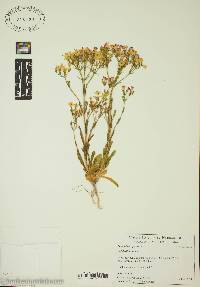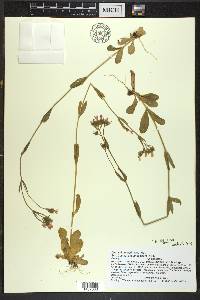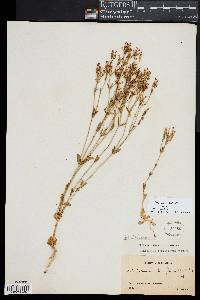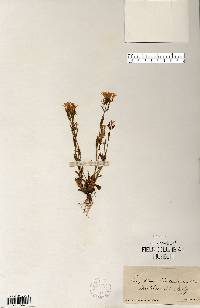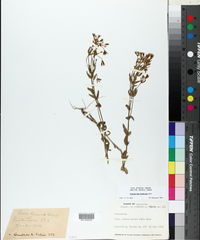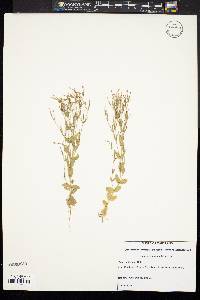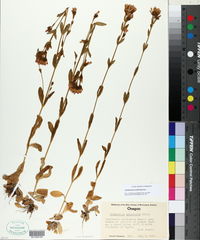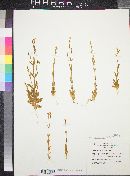
|
|
|
|
Family: Gentianaceae
European Centaury
[Centaurium centaurium, moreCentaurium minus] |
Biennial herb 10 - 50 cm tall Stem: upright, and branched above. Leaves: of two kinds: a basal rosette of small (less than 2 - 3 cm long), stalked leaves; and opposite, stalkless, longer (2 - 4 cm long), stem leaves. The leaves gradually narrow going up the stem, with the basal leaves being oblong or elliptic, the stem leaves being more lance-shaped, and the upper stem leaves being linear. Inflorescence: of multiple, three-branched clusters at the ends of branches, with the entire inflorescence remaining flat across the top (false corymb). Each node of the inflorescence bears a pair of small linear bracts. Flowers: stalkless (closely subtended by bracts), rose-pink, small (about 1 cm wide and long), radially symmetric, and long tubular with four or five spreading lobes. Sepals: pinkish, tiny (3.5 - 5 mm long), inconspicuous (due to closely arranged bracts), fused into a tube, then separating into four or five, very narrow (less than 1 mm wide) lobes. Petals: four or five, but fused into a 6 - 8 mm long tube, then separating into four or five, 4.5 - 5.5 mm long, somewhat oval, spreading, pinkish purple lobes, which are often whitish at the base. Stamens: four or five, spirally twisted, and extending beyond the petal lobes, with which they alternate. Pistil: with a single-chambered, superior ovary; a single style; and a more or less egg-shaped (not linear), very short stigma, which is less than half the length of the style. Fruit: a single-chambered capsule. Similar species: Centaurium erythraea is very similar to C. pulchellum, but that species does not have basal rosette leaves, its flowers are on short stalks, and the petal lobes are narrower and shorter (only to 3.5 mm long). Flowering: June to early September Habitat and ecology: Very rare in the Chicago Region, this species has only been recorded from two sandy sedge meadows in our furthest east counties. It could be expected in damp sands and waste places. Occurence in the Chicago region: non-native Etymology: Centaurium comes from the Latin Centaurus, referring to the myth that its medicinal properties were discovered by the Centaur. Erythraea comes from the Greek erythros, meaning red. Author: The Field Museum Erect biennial, 2-5 dm, branched above; cauline lvs lanceolate to oblong or narrowly elliptic, sessile, 2-4 cm; basal lvs smaller, petioled, forming a rosette; cymes terminating the stem and branches, trichotomously forked, corymbiform, each node bearing a pair of small linear bracts, a central fl, and 2 lateral branches; fls sessile, rose-purple; cal 3.5-5 mm; cor-tube 6-8 mm, the lobes elliptic, 5-6 mm; 2n mostly = 40. Native of Eur. and w. Asia, intr. in waste places here and there in the n. part of our range. June-Sept. (C. centaurium; C. umbellatum) Gleason, Henry A. & Cronquist, Arthur J. 1991. Manual of vascular plants of northeastern United States and adjacent Canada. lxxv + 910 pp. ©The New York Botanical Garden. All rights reserved. Used by permission. |
This project was made possible in part by the Institute of Museum and Library Services [MG-70-19-0057-19].
Powered by Symbiota

